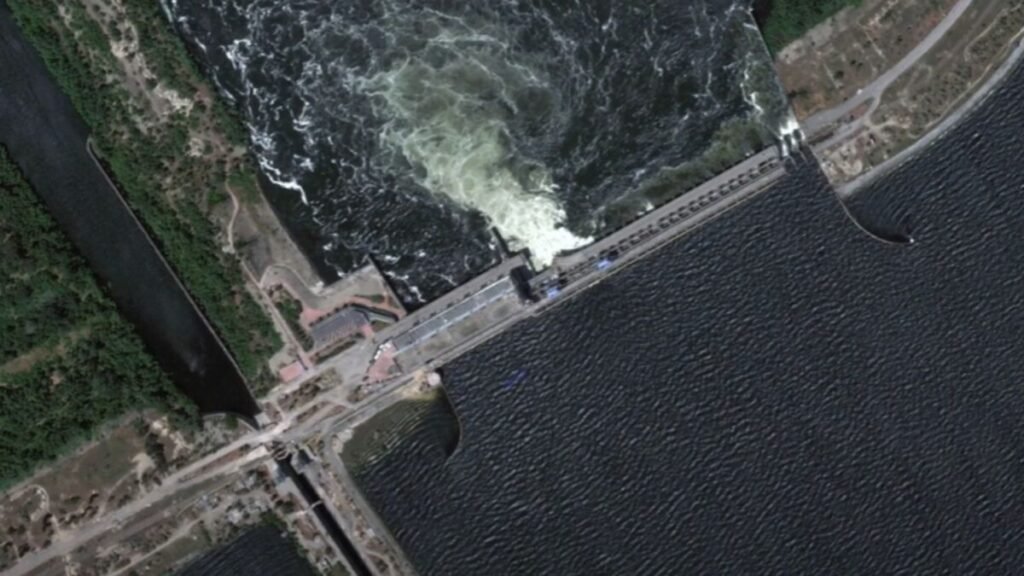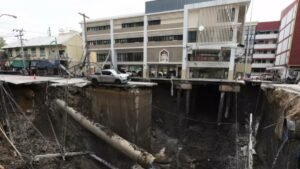The Dam Bombarded by Russia in 2023 Conceals a Disturbing Green Transformation in Ukraine that Alarms Science

In June 2023, a devastating event forever changed the landscape of southern Ukraine. The blowing up of the Kakhovka dam caused an immediate humanitarian and ecological catastrophe. However, over time, this disaster has led to an unexpected environmental transformation. Where once there was an artificial reservoir, now a wild and vibrant forest is growing. At first glance, it seems like a story of hope and natural resilience, but experts warn of alarming proportions. The scientific community observes the phenomenon with amazement…and concern.
### A Disaster that Altered the Landscape Forever
On June 6, 2023, the Kakhovka dam, then controlled by Russian forces, was destroyed, releasing millions of cubic meters of water from the Dnieper River. The torrent swept away entire communities and destroyed vital infrastructure for the region. Although the Russian government denies direct responsibility, the effects of the collapse were as evident as they were immediate.
Over time, what seemed like only ruins and desolation has turned into an unexpected phenomenon. The gigantic reservoir of over 2,000 square kilometers gave way to fertile land, where nature has begun to thrive. The region, which remained submerged for decades, has begun to show signs of remarkable and spontaneous regeneration.
### An Ecosystem Reverting from the Past
The area known as Velykyi Luh, with deep symbolic and historical value for Ukraine, is reclaiming its natural essence. Millions of poplars, willows, and other native species have started to grow without human intervention. This natural reforestation has been described by experts as one of the most remarkable in Eastern Europe.
According to Oleksiy Vasyliuk, from the UWEC conservation group, what is happening is the formation of the largest alluvial plain forest within the Ukrainian steppe. This explosion of life has also allowed the return of endangered species, such as the Ukrainian sturgeon, as well as birds and mammals that had disappeared from the area.

More than 80% of this emerged territory is part of protected areas, included in the European Emerald Network. For many, it is a unique opportunity to turn this space into a reference for ecological restoration in the context of Ukraine’s approach to the European Union.
### A Toxic Danger Lurking Beneath the Vegetation
However, not everything is as it seems. Beneath this apparent environmental recovery lies an invisible threat. For decades, the reservoir served as a deposit for sediments contaminated by pollutants from various factories located upstream. When exposed, these materials could release toxins with high ecological and health impacts.
Ecologist Oleksandra Shumilova warns that the present contaminants can cause severe diseases, such as cancer, lung damage, and hormonal alterations. The most worrying aspect is that the real extent of the problem is still unknown. An article published in the journal Science defines it as a true environmental time bomb, as the volume of contaminated sediments is estimated to exceed 1.5 cubic kilometers.
The difficulty of conducting comprehensive scientific studies in the area, due to the presence of mines and ongoing bombings, further aggravates the situation.
### The Future of the Forest and the Dilemma of Reconstruction
While nature advances, the future of this ecosystem remains uncertain. The state-owned company Ukrhydroenergo has expressed its intention to rebuild the Kakhovka dam, which would involve re-flooding the region. For environmental advocates, this decision would be catastrophic. Vasyliuk sums it up bluntly: “Rebuilding the dam as it was would be an ecocide.”
The dilemma is set. Should hydraulic infrastructure be prioritized, or should this natural experiment that emerged from disaster be preserved? The answer could define not only the fate of this region but also Ukraine’s ecological commitment in a crucial stage of its history.







